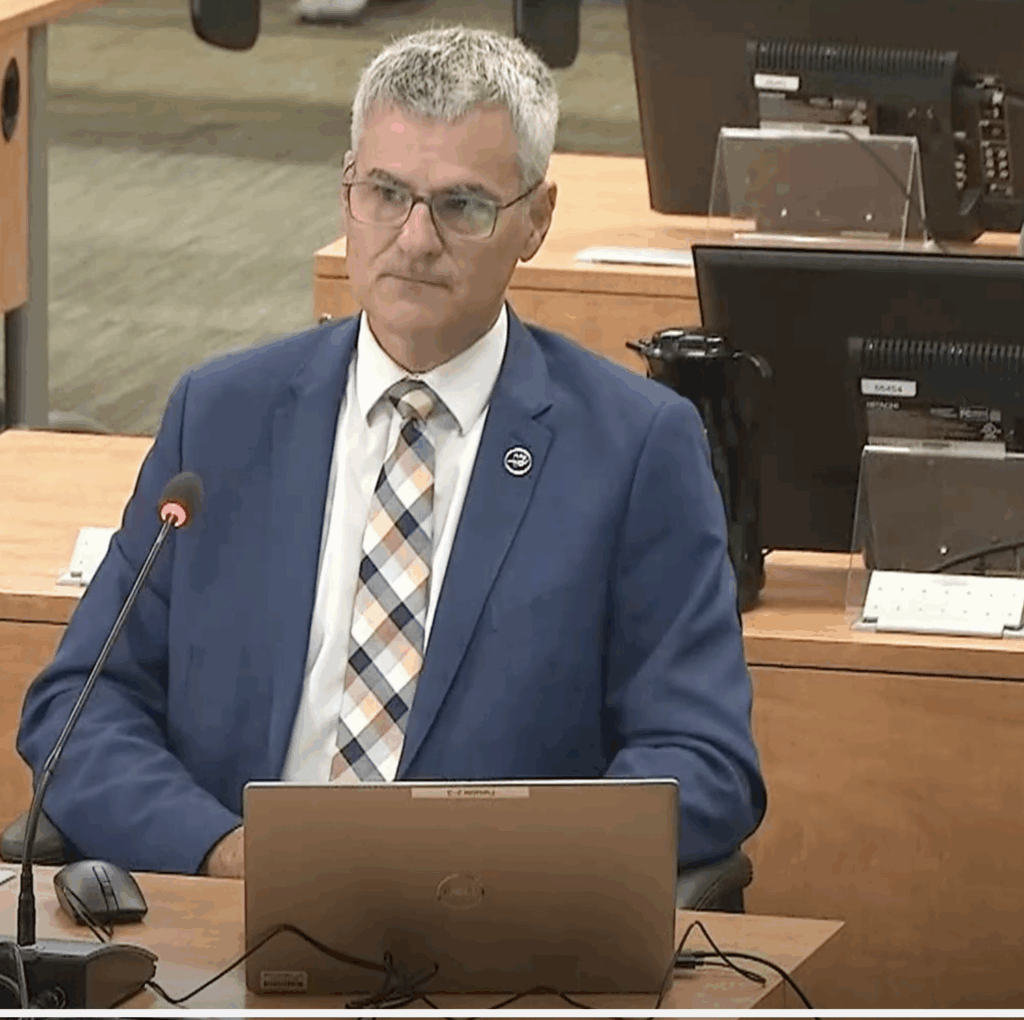City wants to get people talking with ‘chit-chat benches’
Ruby Pratka, Local Journalism Initiative reporter
editor@qctonline.com
and Shirley Nadeau
shirley@qctonline.com
The Ville de Québec is inviting you to sit on a park bench, take your headphones off and talk to strangers.
Earlier this summer, the city placed 12 bright blue bancs à jasette (chit-chat benches) in city parks and public squares, from Cap- Rouge to Neuchâtel. The concept behind the benches is that people who would like to talk to their neighbours or meet someone new can sit on the benches and wait for someone else to stop by for a chat.
The concept exists under various names in France, the United Kingdom, Australia, New Zealand and Zimbabwe. Closer to home, Dartmouth, N.S., set up 20 “chat benches” in 2022.
Deputy Mayor and Montcalm–Saint-Sacrement Coun. Catherine Vallières-Roland embraced the idea after a neighbourhood resident contacted her office about it. The caller had heard it mentioned on the air by former FM93 host P-A Méthot.
“In the current context, which is still kind of post- pandemic, people have been isolated for a long time,” Vallières-Roland told the QCT. “Now, people are getting back into their habits, but we see this as a chance to rebuild links between people. The people who will sit on these benches are open to conversation.”
The benches have been set up in Parc Samuel-Holland (1275 Chemin Sainte-Foy, Montcalm); Parc Dollard- des-Ormeaux (907 Rue Raoul-Jobin, Saint-Sauveur); Parc du Ruisseau-du-Moulin (2555 Rue Lionel-Audet, Charlesbourg); Îlot Pierre-Garon (7985, 1re Avenue, Charlesbourg); Parc Notre-Dame-de-Foy (767 Rue Jacques- Berthiaume, Sainte-Foy); Parc Saint-François-Xavier (2175 Rue Laurent-Laroche, Les Saules); Parc du Complexe- du-Centre-Municipal (305 Rue Racine, Neufchâtel); Parc de la Grande-Oasis (1920 Rue des Tricornes, Saint-Émile); Parc des Écores (4001 Rue Charles-A.-Roy, Cap-Rouge); Parc Henri-Casault (5395, 4e Avenue Ouest; Charlesbourg); Parc Jean-Paul-Nolin (340 Rue Chabot, Vanier) and Parc Royal (3365 Chemin Royal, Beauport).
In an increasingly polarized society, where debates about homelessness, immigration and even urban planning can sometimes turn nasty, Vallières-Roland said creating a space for people to overcome their reticence about talking to strangers “gives [people] a chance to learn more about what your neighbours are going through.
“It creates solidarity, empathy and goodwill. When we learn about [what people are experiencing], we can be more understanding of certain situations; you can start a conversation with someone you might not have spoken to in another context.” She noted that the benches were deliberately placed in “high-traffic areas” near seniors’ residences and schools, to facilitate intergenerational discussions.
According to a cost breakdown posted on Facebook by Vallières-Roland’s colleague, Coun. Marie-Josée Asselin, putting the 12 benches in place, cost the city $7,440 (“$560 for the installation of a normal bench, $50 for the paint and $10 for the little ‘bancs à jasette’ sign”).
“The benches are very inexpensive and easy to put in place,” Vallières-Roland said. “We do want to add more. I’d also like to bring it to the next level by adding cultural and community activities around the benches – neighbourhood meetings, workshops, discussions and intergenerational activities. There will be interesting things we can do with community organizations.”
A chat on the chit-chat bench
The QCT met Pierre Robert Kouyaté, who was born and grew up in Dakar, Senegal, at the jasette bench in Parc Samuel- Holland. Kouyaté has lived in Quebec since 2018, in an apartment complex directly behind the park. He said, “This bench is very special for me since I saw it a few weeks ago. The word jasette was new to me; I had to look it up.
“I come from a society that is very different. Here, it’s more like an individual society. We go to work, we have colleagues, we share the day together but when we finish, everyone goes back home. In Dakar, from the time you finish work, until you reach your home, you meet and talk to many people. You cannot be alone. Since I arrived here in Quebec, I have often felt alone. …When I saw this bench, I thought, this can bring people together to sit and have a discussion. I thought it was a beautiful idea. I am grateful for it. I don’t sit here very often, but I did meet a woman recently who lives in my building. She was walking with her dog and she sat down with me. I learned that she’s from the Saguenay.
“When I finish my day at work, after spending eight hours a day in an office, I come home and I’m alone, it’s not the best. When it’s nice, like today, I go for a walk every day to get some exercise. Then I come here and sit on this bench and talk to my friends around the world.”
With files from Shirley Nadeau




















